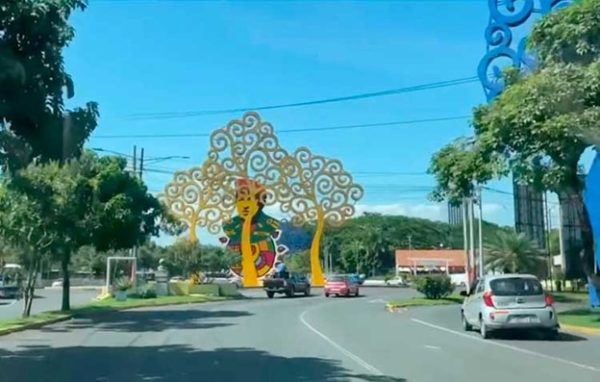Australian Reporter: “In Managua, Normality is an Illusion”

Prue Lewarne, from SBS News Channel, succeeded in circumventing the siege and entered the country as a tourist to interview victims of the repression. She traveled to Matagalpa and narrated the situation of Bishop Alvarez while walking alongside police officers.
HAVANA TIMES – The siege that prevents foreign journalists from entering Nicaragua to report what is happening in the country’s streets is not entirely airtight. The most recent case of a journalist who managed to enter to narrate what is happening is that of journalist Prue Lewarne of the Special Broadcasting Service of Australia (SBS News), who has published two episodes describing the situation.
In her first video, she said she entered the country as a tourist. “In Managua, any sense of normality is an illusion,” she begins narrating with images of the Bolivar to Chavez traffic circle and giant posters of Daniel Ortega and Rosario Murillo.
In this first video, the reporter exposes the siege that Nicaragua is under by denying entry to foreign journalists and the repression that could be faced by anyone who assists her during her work in the country. “And with any critic of the regime, we will have to meet in secret because the dictatorship does not want any dissident voice to be heard,” says the journalist while crossing Managua.
Lewarne was able to speak with a priest, without showing his face or identifying him, about the harsh repression the Catholic Church is experiencing in the country. The priest warned her that he would be arrested immediately if anyone found out about the interview.

Later, the reporter reached the outskirts of the National Penitentiary System, known as La Modelo prison, where she could see dozens of people celebrating the release of their relatives —ordinary prisoners. “These are common prisoners leaving La Modelo prison. The person who will not be released is Nicaragua’s most famous political prisoner, Bishop Rolando Alvarez, imprisoned for 26 years.”
“A young woman shouts a warning that the prison guards are confiscating people’s cellphones, looking for newly recorded videos, so we have to leave,” narrates the journalist filming in the crowd.
She narrates the repression alongside police officers
The reporter reached Matagalpa, the city of Bishop Alvarez, and walked by the side of the Episcopal Curia, which police officers guard. “I am passing by; some policemen here have said good morning to me,” she says while walking and filming herself narrating the situation of Monsignor Alvarez.
Near her, two policemen are standing next to a motorcycle and a police patrol car while the journalist walks and speaks in English in front of the camera. When the street ends, she turns to the police officers and waves goodbye.
Second installment: visit to La Esperanza
This Thursday, the Australian network broadcasted the second part of the journalist’s work, which begins by narrating the arrest of three young university activists after the cancellation and confiscation of the Central American University (UCA).
This time Prue Lewarne arrived to record outside the women’s prison. “We arrived where the Ortega regime keeps women political prisoners, not far from Managua, a prison in Tipitapa,” she recounts.
“Virtually all Nicaraguan journalists are in exile or prison. Filming is not allowed here. We try to limit our exposure, but we have heard that the families of the three young women will be visiting them for the first time,” she says as she asks the person filming her not to go any further, and she walks toward the prison gate.
“La Esperanza (Hope), the name of the prison, is not what the families feel when government agents arrive,” says the journalist as two prison guards approach her. “There is no time to linger. The guards are coming. Ok. Let’s go,” she says to the person filming her. The report does not explain whether the guards said anything to her.”
In this part of her report, the reporter focuses on youth repression with the closing of the universities and the detention of the activists. She spoke with a relative of one of the young women and with a former UCA student, who told her that she is looking to leave the country “for a better future and because of fear.”
The first images of this second episode begin with a marching band school parade and end the same way, with the reporter asserting that “education is celebrated in this country, where speaking out can land you in jail. This is perhaps the lesson that a young mind should guard against dissent: no one should know what you are thinking.”
The second journalist undercover in recent weeks
Before the Australian reporter, the US National Public Radio (NPR) correspondent Eyder Peralta managed to circumvent Daniel Ortega’s dictatorship’s restrictions to prohibit entry to anyone linked to the media. Peralta entered the country legally through a remote border post.
The NPR journalist was born in Nicaragua and has a Nicaraguan passport —but he moved at a very young age to the United States and has US citizenship. He described the first impression he had upon crossing the border: “It was as if I had gone back in time, I mean, it feels Soviet. The posters are all faded, and instead of Nicaraguan flags, there are dozens of these little red and black flags, the colors of the ruling party,” referring to the Sandinista National Liberation Front (FSLN).





